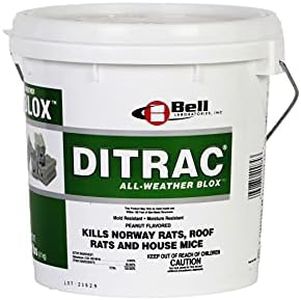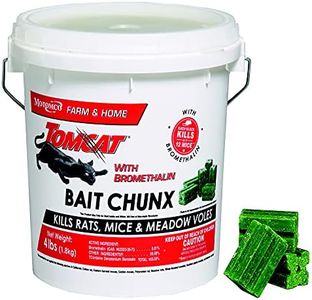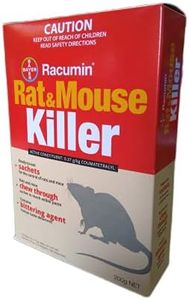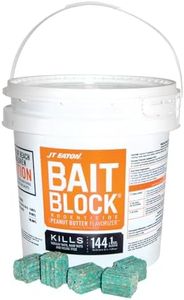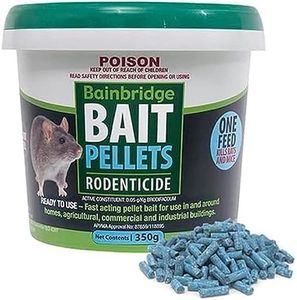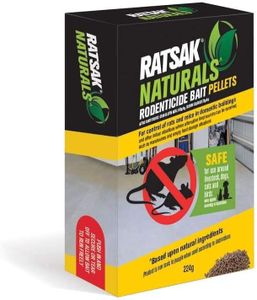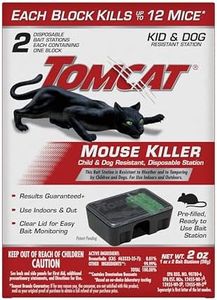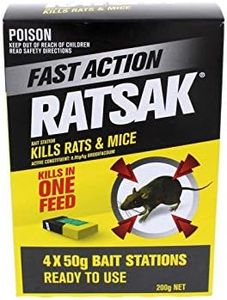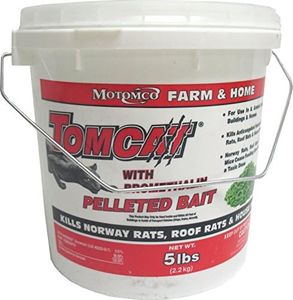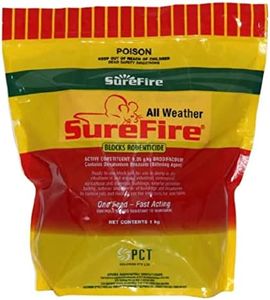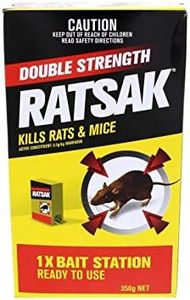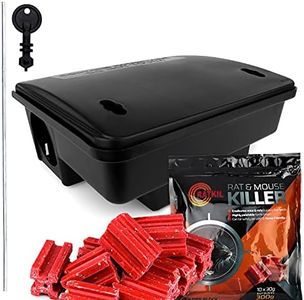We Use CookiesWe use cookies to enhance the security, performance,
functionality and for analytical and promotional activities. By continuing to browse this site you
are agreeing to our privacy policy
10 Best Mouse Poisons
From leading brands and best sellers available on the web.Buying Guide for the Best Mouse Poisons
Choosing a mouse poison may not sound glamorous, but it’s an important step if you’re dealing with a mouse problem. Your main goal is to select a product that works effectively, fits your particular situation, and minimizes risks to pets, children, and the environment. Making an informed choice means understanding how these products work, assessing your environment for safety concerns, and being aware of handling and disposal instructions. It’s wise to balance effectiveness with responsibility, ensuring you deal with your rodent issue while protecting others in the household.Active Ingredient TypeThe active ingredient is the component in mouse poison responsible for killing the rodent. This is important because different ingredients work in different ways and have various risk levels for humans, pets, and wildlife. The most common types are anticoagulants, which cause internal bleeding, and non-anticoagulants, which work through other toxic effects. When choosing, remember that anticoagulants often require multiple feedings to be effective, and there’s a higher risk to pets if they accidentally consume it, whereas some non-anticoagulants may kill faster but can also have secondary effects if other animals eat the poisoned mouse. If you have children or pets in the home, look for products with lower secondary poisoning risks and consider tamper-resistant bait stations.
Form of PoisonMouse poisons come in several forms, such as pellets, blocks, grains, or liquid. The form matters because it impacts how easy the poison is to use, how appealing it is to mice, and how likely it is that non-target animals could access it. Blocks tend to be less messy and easier to place in bait stations, while pellets or loose grains might be more attractive to the mice but can scatter, increasing risk to other animals. Liquids are sometimes used where water sources are scarce and mice are more likely to drink them. To pick the best one, consider where you’ll be placing the poison and who might access the area (kids, pets, livestock). If in doubt, blocks in a bait station are usually safest.
Delay Time to EffectThis is how long it takes for the poison to work after the mouse eats it. It’s important because an immediate effect may cause mice to associate the bait with feeling ill and avoid it, while a delay means they are less likely to learn and keep eating the bait. Typically, poisons are designed to take several days to take effect, which makes them more effective overall. If you need quick results, you might be tempted to get something fast-acting, but for most users, a delay of a few days is preferable for better mouse control.
Safety FeaturesSafety features refer to how much the product is designed to reduce the risk of accidental poisoning for humans, pets, and wildlife. This could mean tamper-resistant bait stations, bittering agents added to deter tasting by people, or formulations less attractive to animals other than mice. Always check for these if the poison will be placed anywhere besides an isolated crawlspace or attic, especially if you have kids or pets. Going for products with strong safety features is a smart choice in most home environments.
Indoor or Outdoor UseSome mouse poisons are specially formulated for use inside the home, while others are for outdoor use. This matters because outdoor formulations are designed to withstand weather and be effective in open environments, while indoor products focus on minimizing strong odors and residue. Read labels carefully to select according to where your mouse problem exists. Never use an outdoor-only product inside the house, as it could be more toxic or leave unwanted residues.
Disposal and Handling InstructionsProper disposal and handling protect you, your family, and the environment. Some poisons may require you to wear gloves, wash hands thoroughly, or follow special rules for disposing of dead mice. This is particularly important if your household contains vulnerable people or animals. Before choosing, make sure you are comfortable with the handling requirements and can safely meet all disposal instructions outlined by the manufacturer.
